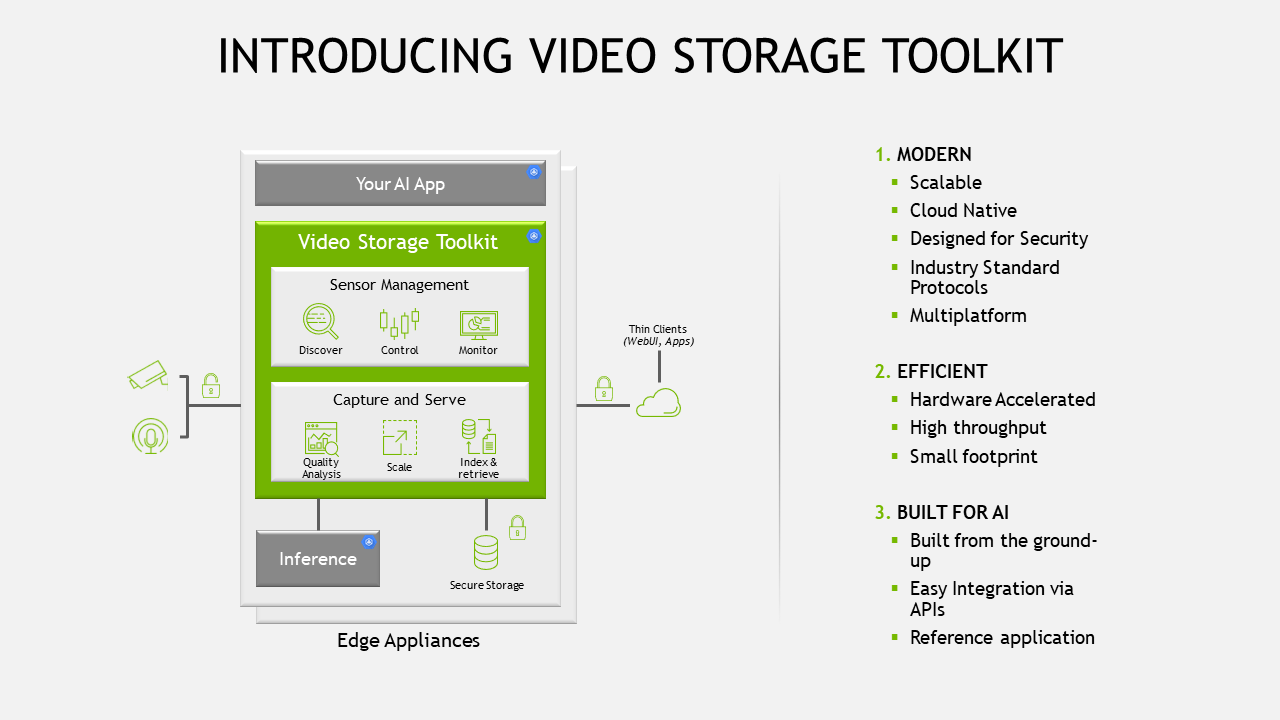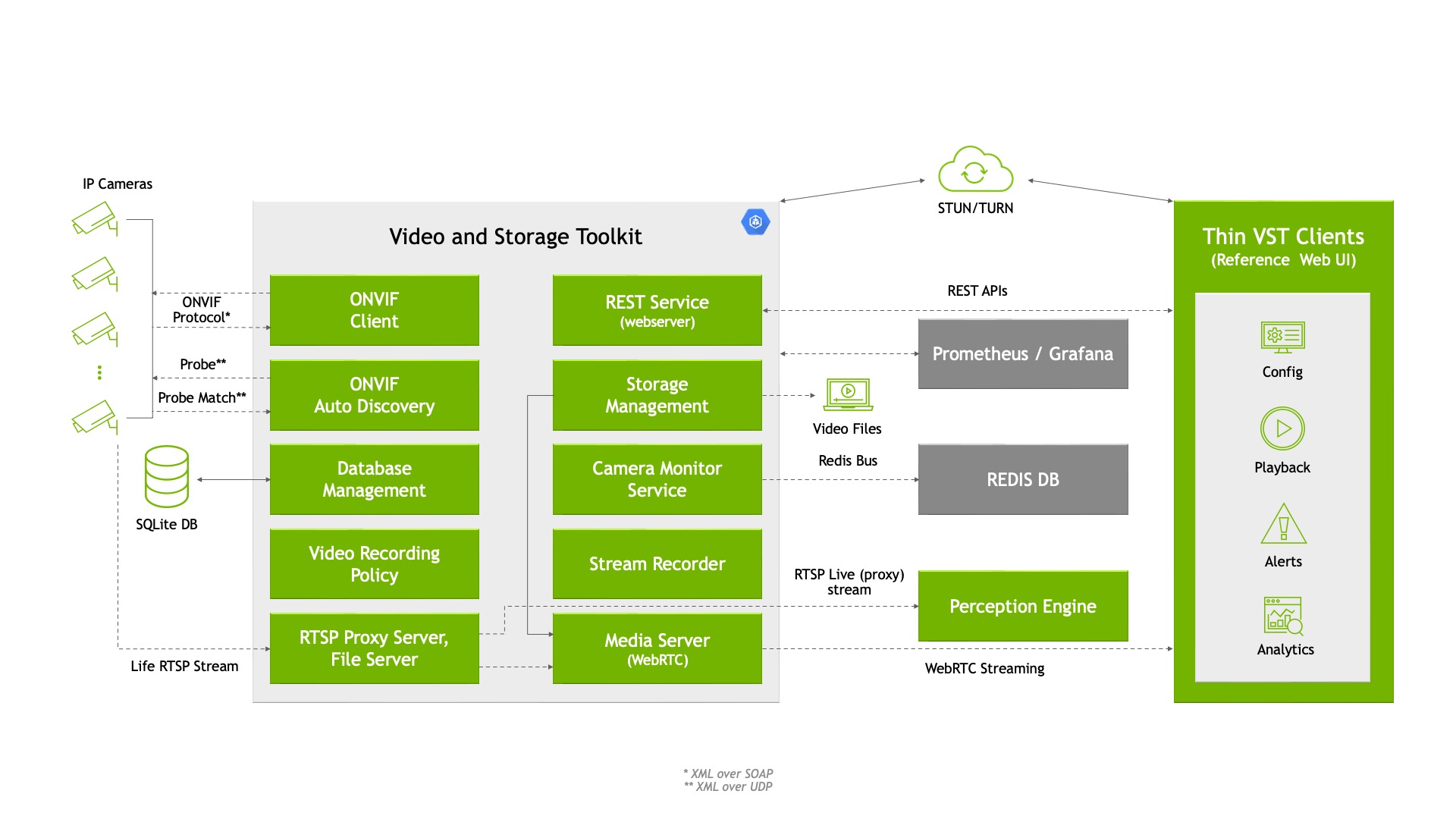Overview
Introduction
Video Storage Toolkit (VST) is a new addition to the Metropolis platform. It provides an efficient way to manage cameras and videos, especially in scenarios where AI is the main functionality.
VST features hardware-accelerated video decoding, streaming, and storage. VST is easy to integrate with your video analytics application, through its REST API. It also includes a reference web UI for efficient management of your devices.
Features
VST auto-discovers ONVIF-S compliant IP cameras, and allows use of custom IP stream as video source. It then allows for video to be stored, played back at various speeds, or paused at any frame:
Support ONVIF S-profile devices, ONVIF discovery with control and data flow.
Manage devices manually by IP address and/or RTSP URLs.
Video storage and recording with aging policy.
RTSP proxy URL in pass-through and multi-cast mode.
Media streaming using hardware-accelerated WebRTC protocol for live and recorded videos.
Recorded playback supported with 2x,4x,8x FF, overlay & snapshot support.
Supports both H.264 and H.265 video formats.
Video wall feature which provides composite view of multiple webrtc streams.
Provide REST APIs to write client application to control and configure VST.
Support Redis/Kafka message bus to publish device add/remove events.
Prometheus/Grafana integration for publishing VST statistics.
Derive insights about the current status of VST.
Cloud native. Deploy as a container.
We included binary for a web-based client that allows to view live and recorded content, as well as to modify camera and stream configuration (Web-UI Viewer).

Architecture Overview
The diagram below shows an overview of the VST architecture.
VST supports ONVIF-S so it can auto-discover and manage cameras that support the standard. Refer to the list of Cameras Tested in VST in VST.
VST allows remote access to clients. VST includes a reference Web UI that enables you to configure cameras, and configure the overall system. Check the key features of the Web UI: Reference Web App.
To get started, jump into the API section which provides details on all the supported RESTful APIs.
If you are planning to access VST from a different subnet, make sure you setup a STUN/TURN service. Check the Installation of STUN / TURN Server for additional details.
The images below show the block-diagram and the typical setup.

Block Diagram

Cameras Tested in VST
Manufacturer |
Model |
|---|---|
ANNKE |
C500 |
ANNKE |
NC400 |
AMCREST |
IP8M-2493EW |
AMCREST |
IP8M-T2499E |
AMCREST |
IP8M-2496E |
AMCREST |
IP2M-841W-V3 |
AMCREST |
IP4M-1026E |
AMCREST |
IP5M-T1179E |
AXIS |
P3301 |
BOSCH |
Flexidome_IP_4000I |
CP PLUS |
CP-UNC-TB41L3-MDS-0360 |
JIDETECH |
IPC-3C1-5MP |
HANWHA |
QND-6012R |
HANWHA |
QND-6072R |
QSEE |
QTN8083B |
QSEE |
QTN8098B-N |
SONY |
SNV-VB640 |
SONY |
SNC-VB770 |
SONY |
SNC-XM632 |
SONY |
SNC-EM630 |
HIKVISION |
DS-2CD2043G0-I |
HIKVISION |
DS-2CD2T43G0-I5 |
HIKVISION |
DS-2CD2045FWD-I |
HIKVISION |
DS-2CD3121G0-I |
HIKVISION |
DS-2CD3023G0E-I |